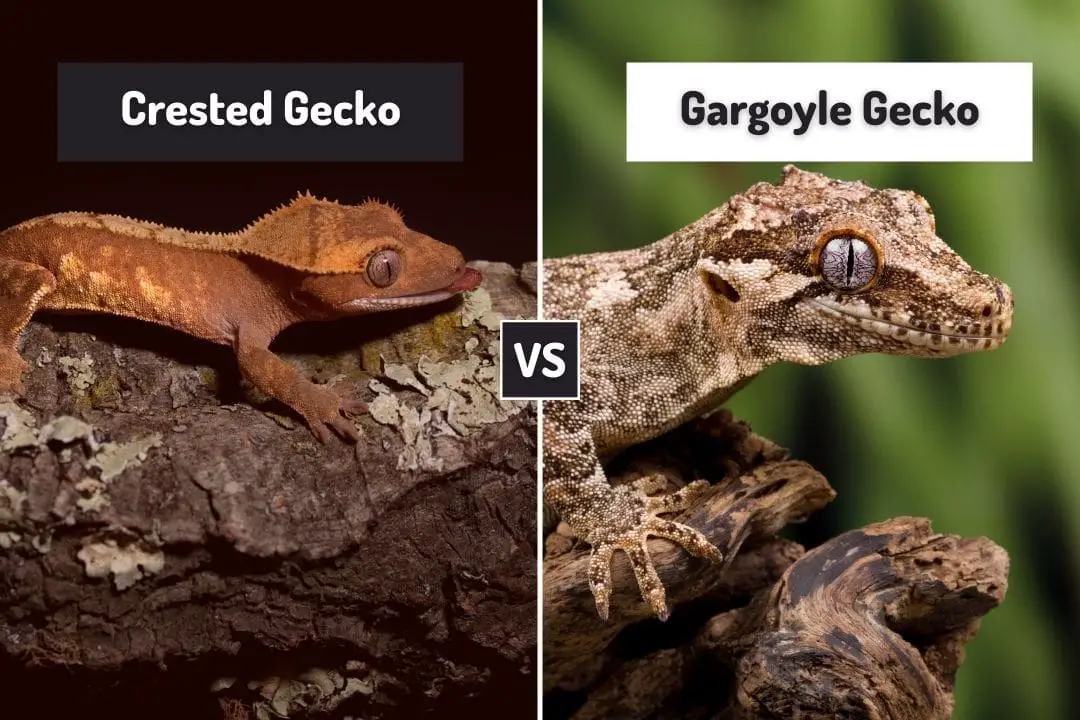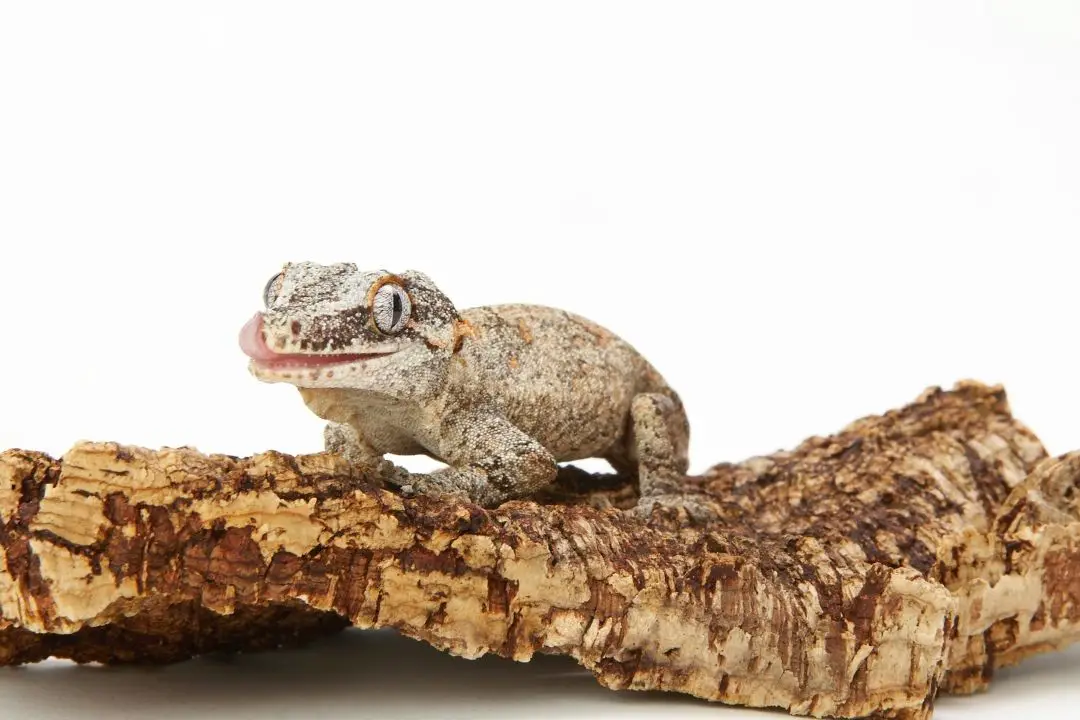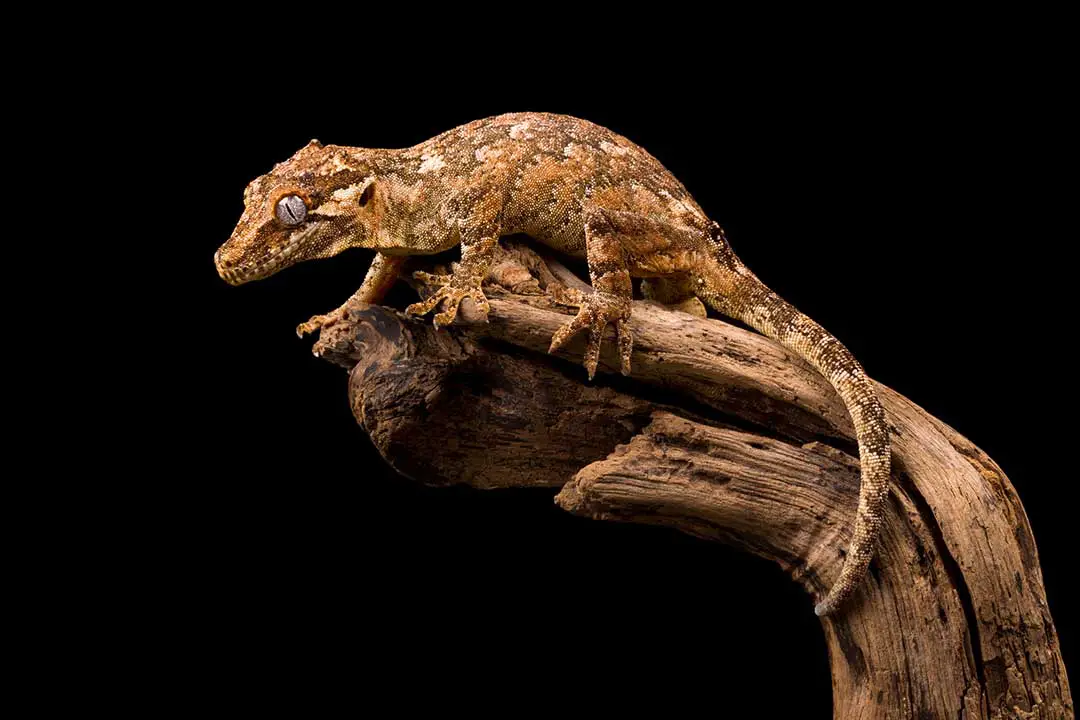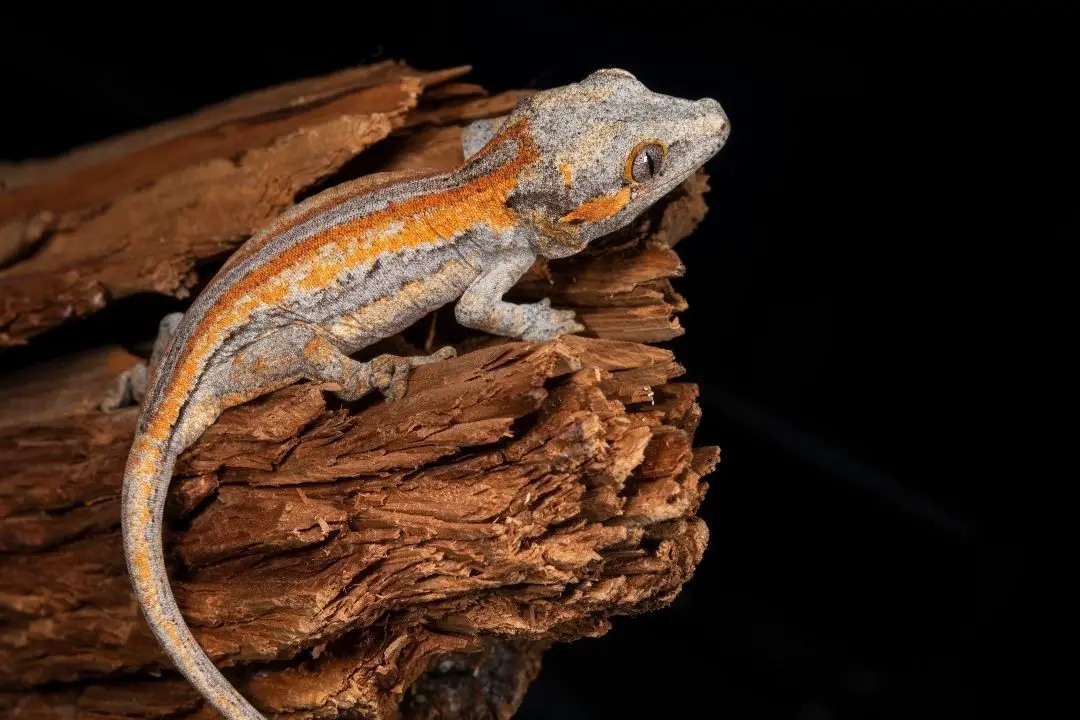The Gargoyle Gecko (Rhacodactylus auriculatus) and the Crested Gecko (Correlophus ciliatus) are two gecko species both native to New Caledonia.
These animals have very similar care requirements, so they are frequently both recommended as a good option for a beginner gecko keeper.
So, what are the differences between a crested gecko and a gargoyle gecko? This list will teach you a bit about what sets them apart and might make one species better for you than the other.
1. Size
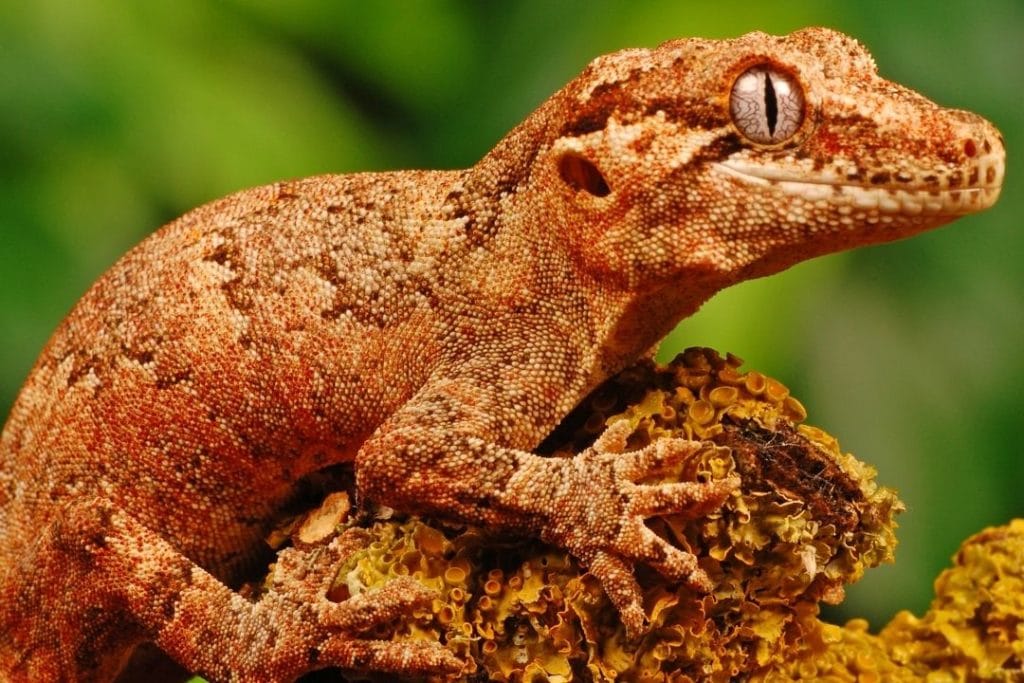
Crested geckos are 6-10 inches long as adults counting the tail. Crested geckos do drop their tails easily even with good care at times so many adults will be smaller since they lack the tail.
They also do not grow them back, so you may end up with an animal that will only be 5 inches long since they are rarely larger than 5 inches snout to vent.
Gargoyle geckos are a similar size as they average around 7-9 inches long as adults counting the tail.
Gargoyle geckos frequently keep their tail since they are slightly less likely to drop it if startled and are capable of growing it back.
2. Weight
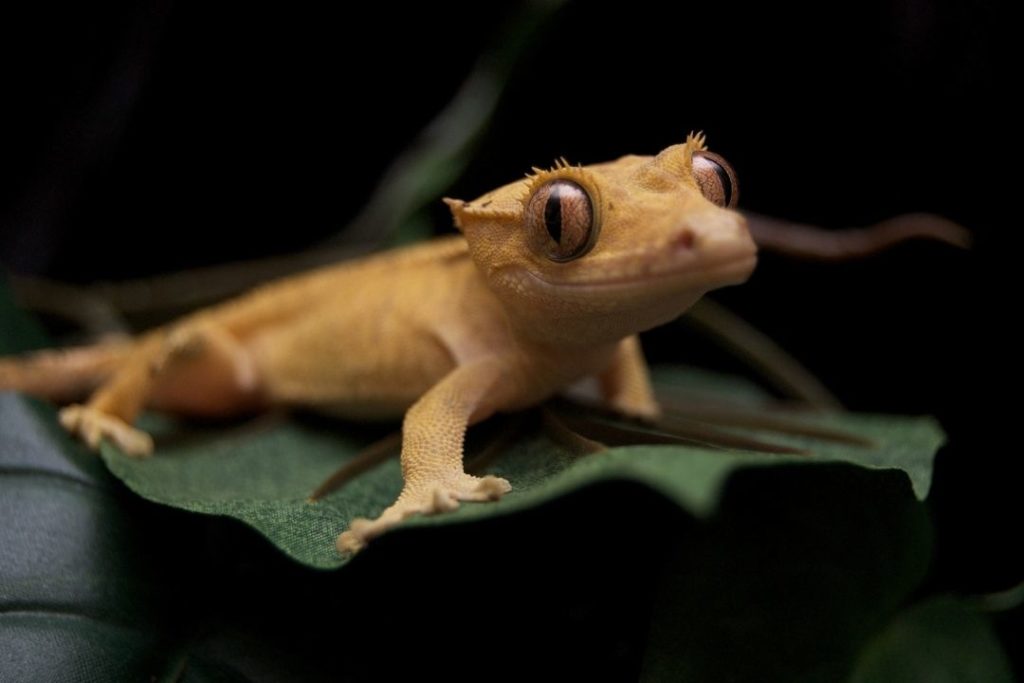
Gargoyle geckos are on average much heavier despite a similar body size.
An adult gargoyle gecko will be between 50 and 80 grams. Hatchlings will be around 3 grams out of the egg and 2-3 inches.
Crested geckos are lighter animals.
An adult will be up to 55 grams and hatchlings only weigh 1.5 to 2 grams out of the egg. A gargoyle gecko needs sturdier climbing structures to keep them happy.
3. Appearance
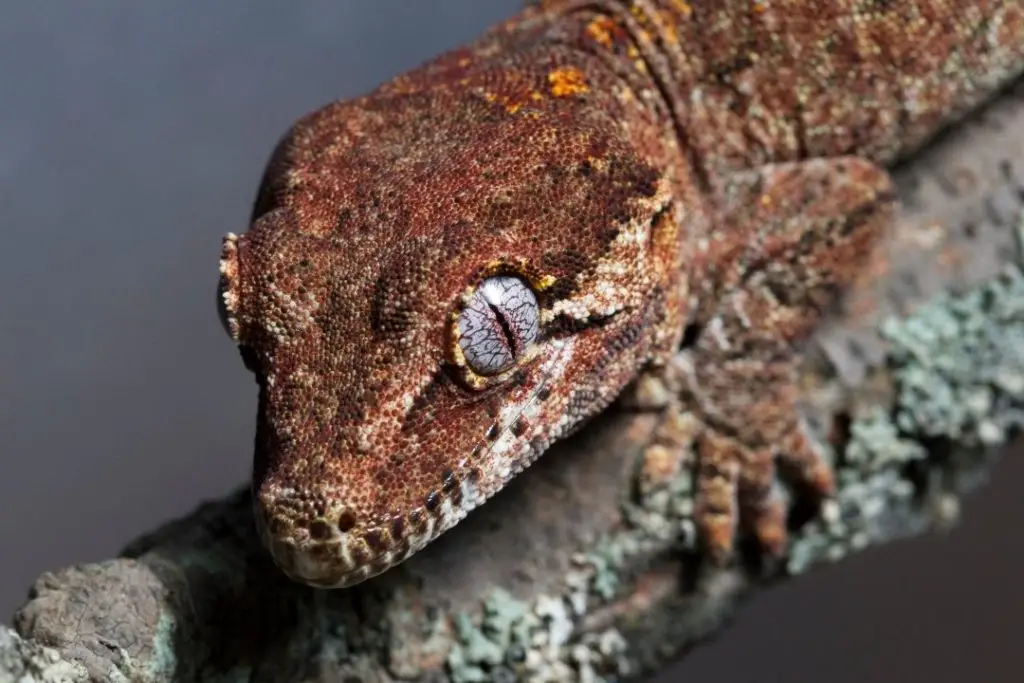
The biggest difference between these geckos is the shape of the head. Crested geckos have a line of spines on the head that is frequently compared to eyelashes.
Gargoyle geckos have bumps on the head that give them their other common name, the New Caledonian bumpy gecko.
4. Color
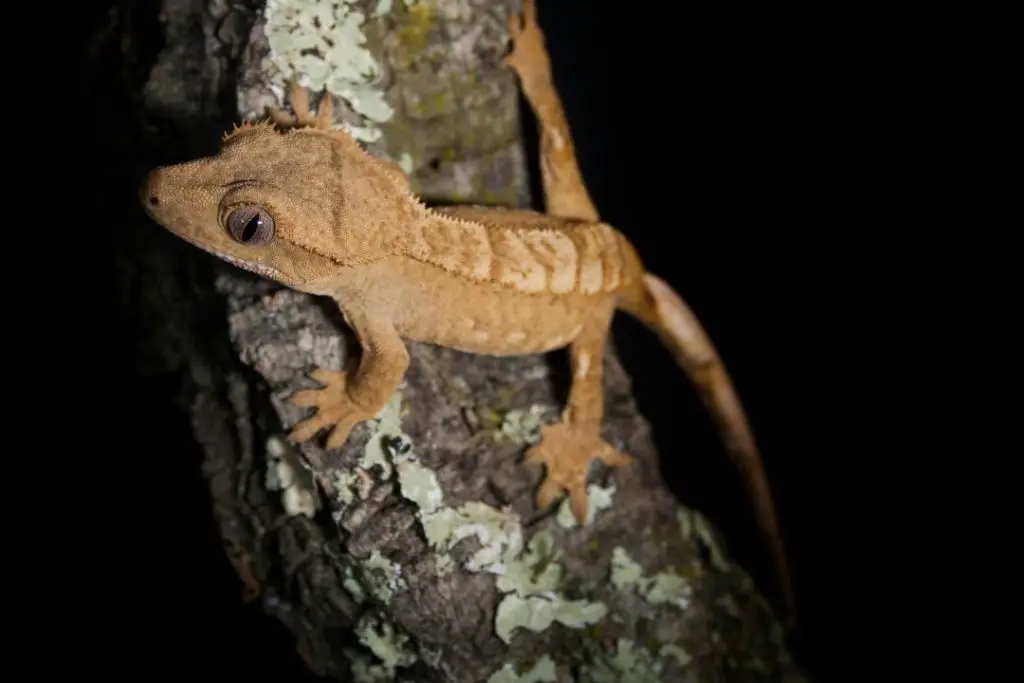
Crested geckos in the wild come in brown or beige as adults. They can be found in other colors from breeders including white, yellow, orange, and red.
Gargoyle geckos can be found in the wild with a larger number of colors and patterns. Wild animals can be cream, yellow, brown, or tan.
They tend to have more patterning in the wild. These patterns and colors have been refined to create more colorful animals in captive breeding programs.
Gargoyle geckos are typically more vivid and have a wide range of morphs available for color and pattern.
5. Personality
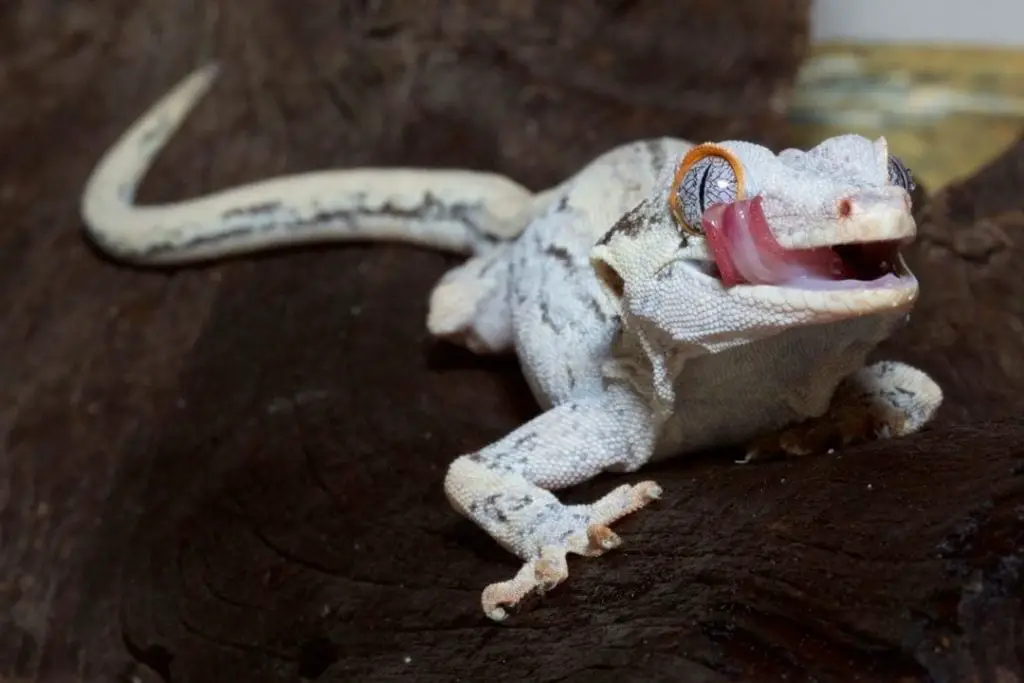
On average, gargoyle geckos start out more skittish than crested geckos. They tend to take more time and patience to tame down.
Crested geckos are a bit easier to tame down so long as you are patient. This means that they may be better for someone with less experience with geckos.
Once tamed, crested geckos are typically happy with more time with their owner versus gargoyle geckos. Both species still need time alone to stay happy.
6. Aggression
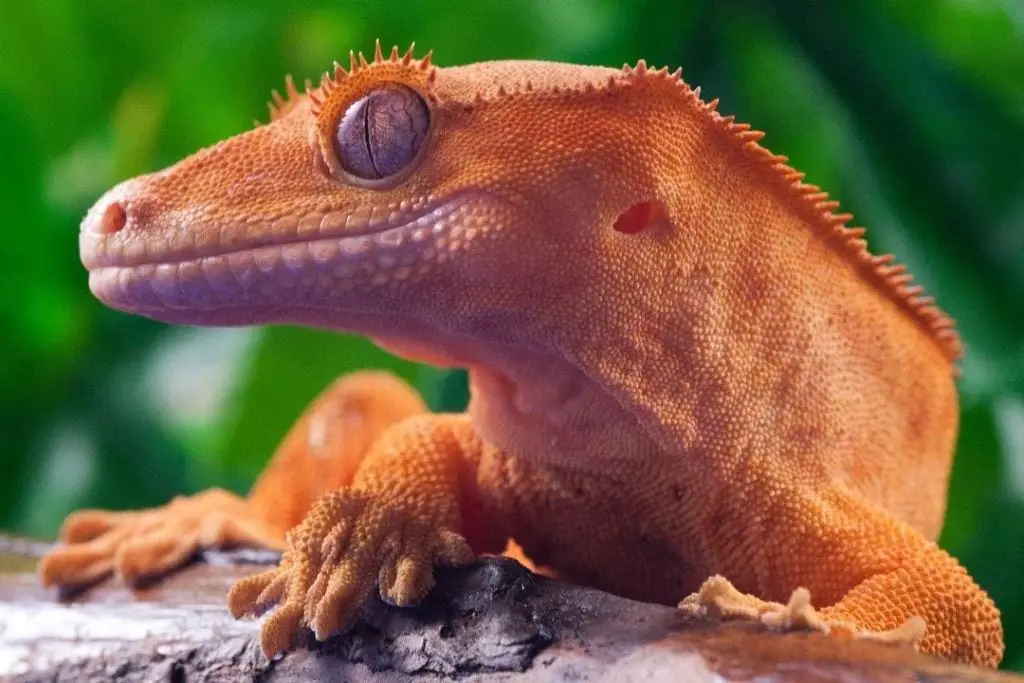
When it comes to aggression, crested geckos tend to have little aggression for both humans and other members of their species.
They may fight, but it is not as common as it is with gargoyle geckos.
Gargoyle geckos are not typically aggressive towards humans so long as they are treated well.
However, gargoyle geckos do not tolerate other members of their species on average. Males will fight, females tolerate each other more but may still fight.
Gargoyle geckos are also known for eating each other as hatchlings and juveniles if housed together.
Even adults will eat a much smaller gargoyle gecko if they are housed together.
Adults need to be watched carefully if you are trying to breed them to make sure the animals get along.
7. Handling
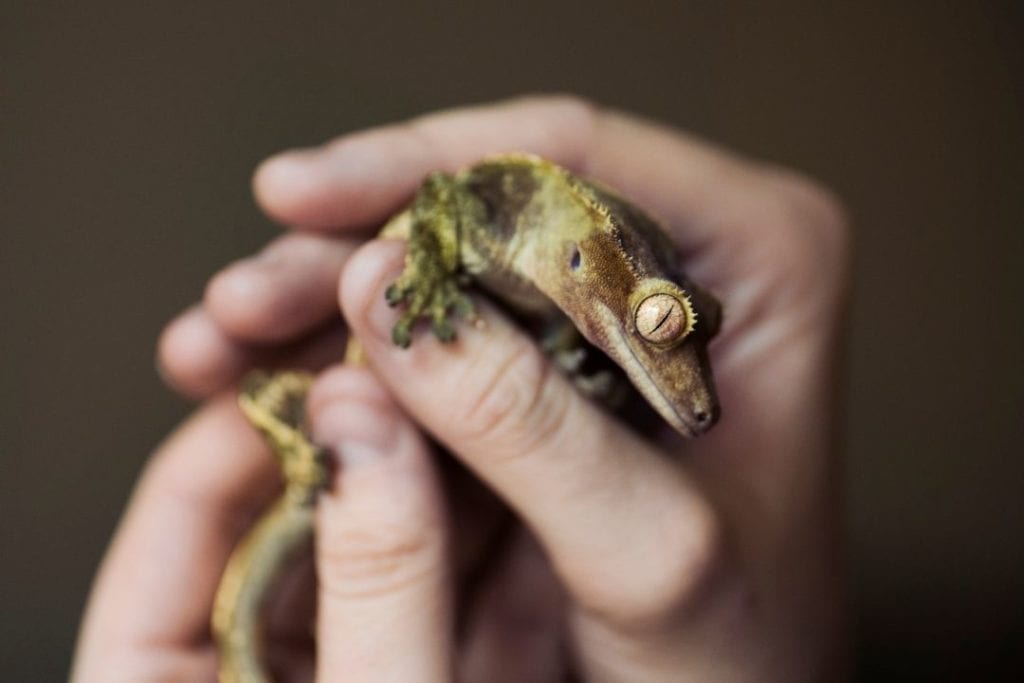
Crested geckos are a bit jumpier on average during handling. They are still easy to handle compared to other species, but they can be quick.
They are also prone to stress if you are not gentle with them.
They need gentle and calm handling, which means only adults should handle a crested gecko.
Gargoyle geckos are slower and much easier for beginner gecko owners to handle. They are typically quiet, calm and friendly geckos during handling.
Young animals may try to escape you, but so long as you keep interactions positive, your gargoyle gecko should calm down.
8. Enclosure Size
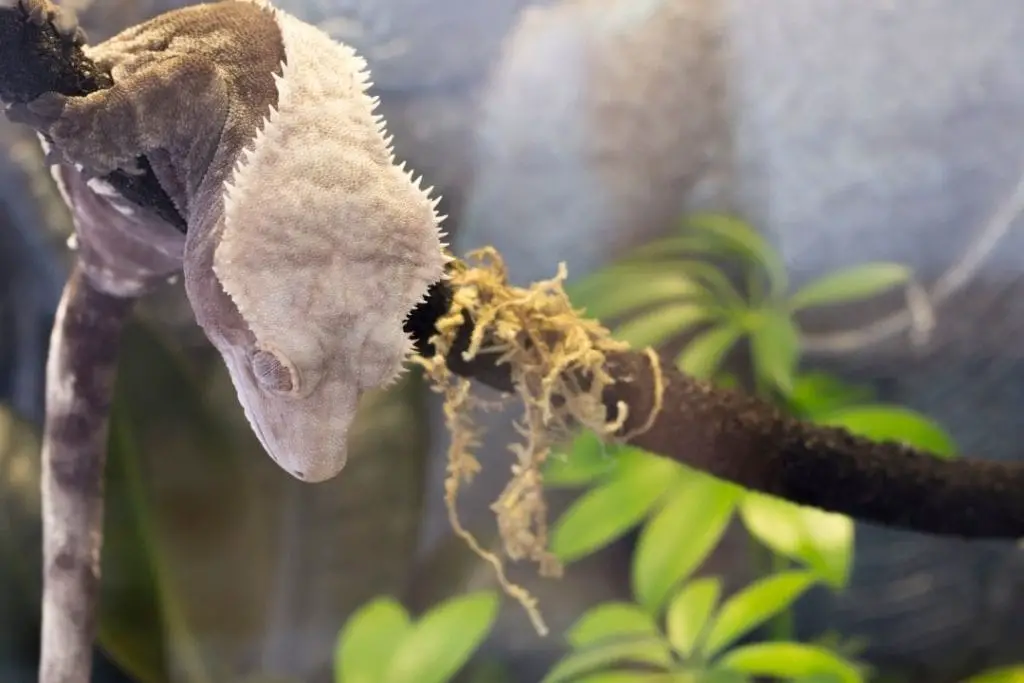
On average, a single adult crested gecko needs 20-25 gallons. It needs some height since they are fast animals that love to climb.
Gargoyle geckos need around the same size, with 20 gallons as the absolute minimum.
Exo Terra Terrarium (24x18x18)
- Front access will stress your pet a lot less than enclosures opening from the top
- Completely escape-proof
- Well designed ventilation
- Convenient inlets for heating cables, without any visible wires.
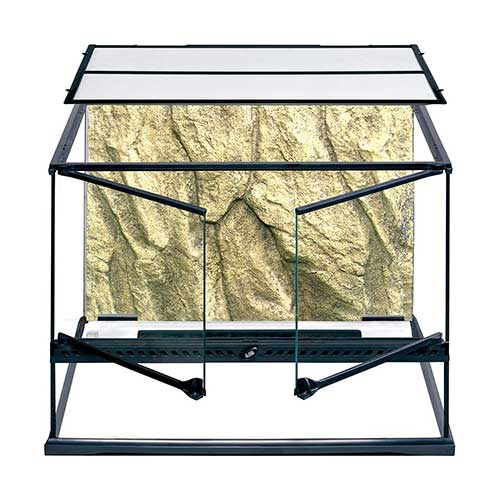
Crested geckos do not always need a specific enclosure as juveniles.
So long as the animal can find its food and water and has plenty of places to hide, it will be happy.
While a juvenile crested gecko will do fine in an adult sized enclosure, gargoyle geckos frequently need a smaller grow-out enclosure as juveniles.
If you house multiple crested geckos, you need a minimum of 30 gallons for a pair according to most reptile breeders maintaining the species.
Gargoyle geckos need around the same for a single pair, but you must take extra steps to offer plenty of places to feed and hide since they are more likely to fight when housed as multiple geckos.
9. Care Requirements
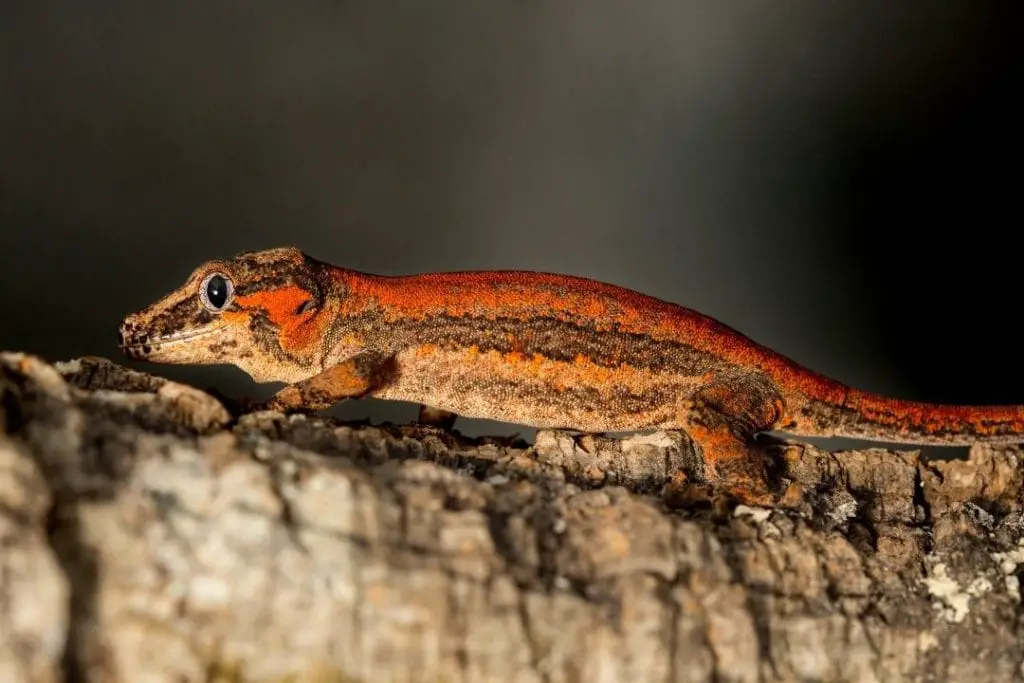
Both crested and gargoyle geckos have similar care requirements and terrarium setup.
Crested geckos need UVB, while you may be able to keep gargoyle gecko healthy without UVB so long as you supplement.
This 13W UV lamp is more than enough for crested or gargoyle geckos:
Zoo Med ReptiSun 5.0 UVB Mini (13W)
- Can be placed either vertically or horizontally and doesn’t emit heat.
- 5% UVB wavelengths helps prevent metabolic bone disease.
- Eliminates the need for a separate ballast.
- 30% UVA wavelengths help to increase activity levels, appetite, and reproductive behavior.
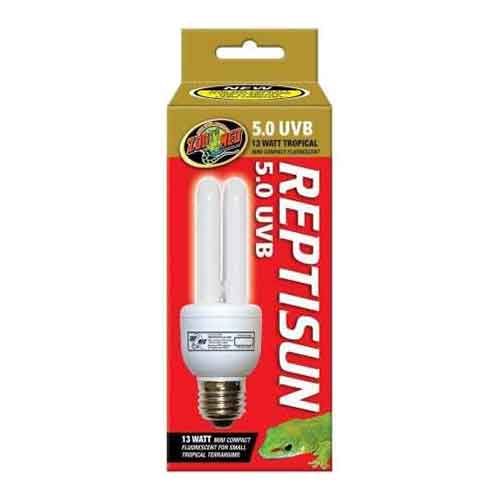
It is still recommended that you give them some UVB to help keep them healthy.
- Crested geckos need a basking temperature of 80 degrees or so and about 60-80% humidity.
- Gargoyle geckos need the ambient temperature to be around 82 degrees and the cool side needs to be around the low 70s to keep the animal healthy.
They need about the same humidity as crested geckos, according to their natural habitat.
Gargoyle geckos are very hardy geckos and can handle lows into the 60s during the winters at night.
There is a myth that new caledonian bumpy geckos (gargoyle geckos) do not need heating, but they need a thermal gradient that you maintain with a basking bulb or the animal may suffer.
10. Diet
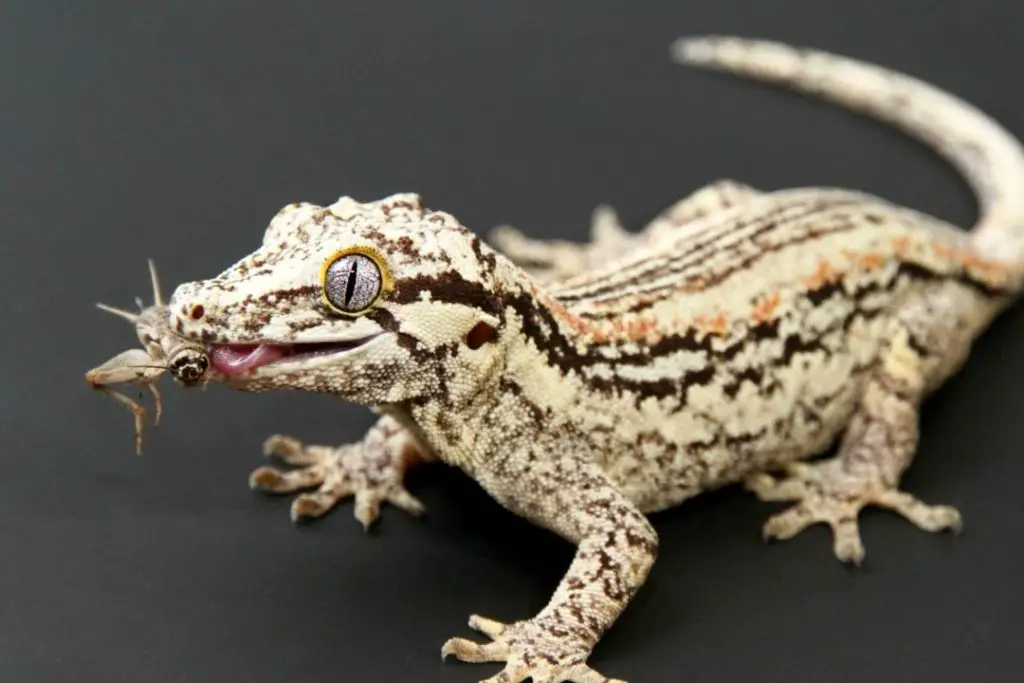
Crested geckos are lucky enough to have great complete diets available that make feeding crested geckos easy.
You should do your research on brands, but Repashy and Pangea make a good varied diet that will keep your pet healthy.
Juveniles need gut-loaded and dusted insects like crickets and dubia roaches (feeder roaches).
Adults will be fed insects less often since they can get fat off of too many insects.
Waxworms make a good treat particularly for thin crested geckos, but never offer mealworms or superworms since they can cause impactions.
Gargoyle geckos also eat the same crested gecko diet, but they need insects more frequently like most medium sized lizards.
Juveniles eat insects every other day and adult exotic geckos get insects twice a week on average.
Dubia roaches, discoid roaches, crickets, black soldier fly larvae, and silkworms are all good for a regular diet, but keep the feeders smaller than the space between the gecko’s eyes.
They should be dusted with calcium for every feeding.
Use calcium with vitamin D if you do not offer UVB to prevent bone disease.
We hope this has taught you about the species and their differences. Both are great pets for any level of reptile experience.
The only issue may be humidity if you have never kept reptiles before.
If you have any questions or comments about these very popular geckos, please leave them below.
